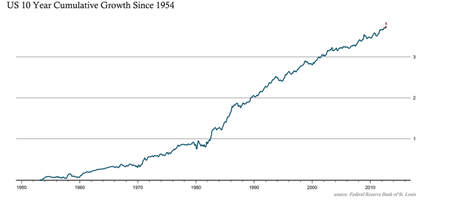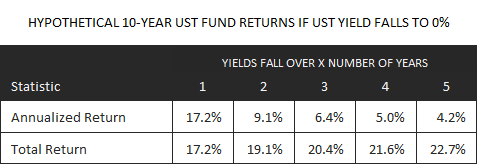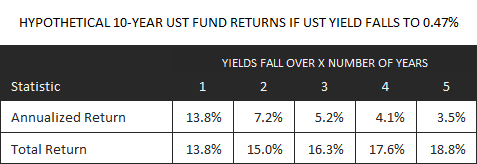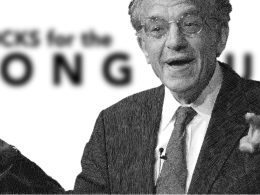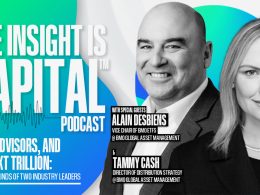This is a follow up to Timely Portfolio’s interesting post estimating how an investment in 10-year US Treasuries (constant maturity, similar to IEF) might perform in an extreme theoretical scenario where 10-year yields fall to 0% in one month (h/t The Whole Street).
The following chart is taken from Timely’s post showing the return on 10-year Treasuries (constant maturity) since 1954. That tiny red line represents yields falling to 0% by the end of this month, which would result in about a 17% one month return.
In this follow up I’ll show how that 17% return might differ if the drop to 0% happens over the course of the next one year, two years, etc.
The numbers…
Here I’ve shown the annualized and total return of our hypothetical 10-year constant maturity investment (similar to IEF) if yields fall from the September average of 1.72% down to 0% over the course of the next 1 year, 2 years, etc.
I assumed that the decrease in yield was linear. In other words, change in yield this month = (1.72% / # of months in test * -1).
Note how the longer it takes to get to 0%, the greater the total return (because investors are enjoying that ever dwindling UST yield over a longer period of time), but the smaller the annualized return (because the immediate benefit of falling yields on prices are also stretched over a longer period of time).
In a sense, these numbers represent a theoretical best case scenario for 10-year UST funds over the near term (well not entirely, yields could stay the same until the very last month of the test and then plummet to zero which would result in an even higher return, but now we’re getting really unrealistic).
Of course, studying 10-year yields falling all the way down to 0% might not be very helpful. Timely also talks about how Japan’s 10-year yields briefly touched a low point of 0.47%.
What if we assumed that 0.47% was also our low point? Here is the same test, with yields falling from 1.72% to 0.47% over the next X years.
Not much commentary to add here. The blogosphere is doing a fine job spelling doom and gloom for Treasuries without me (as they have been for at least a couple of years now).
This of course has all sorts of implications for tactical asset allocation type programs, but that’s something I’m still mulling around in me noggin’ and the subject of a future post.
Just one last comment – if you are of the mindset that Treasury fund returns will be subpar from here, that doesn’t mean that they’re necessarily without purpose. UST has been one of the few asset classes that have (mostly) maintained low to negative correlation with equity-like assets in recent history, and they may continue to be useful as a way to minimize portfolio volatility.
Happy Trading,
ms
Copyright © MarketSci Blog




